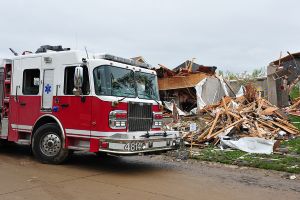 Virtual Reality (VR) has strong roots in the military. Long used for training and simulations, the military has helped develop VR technology and continues to innovate in how it can be used. VR continues to be invaluable to tactical, mission training but is also being used in other training areas. For example, the Virtual Welder Trainer program simulates multiple welding processes, blending real world and computer-generated images into a VR environment to allow welders to train without having to use real world resources. Just as flight simulators save money in terms of aircraft use, other virtual reality in military training applications provide similar cost savings in terms of equipment and travel.
Virtual Reality (VR) has strong roots in the military. Long used for training and simulations, the military has helped develop VR technology and continues to innovate in how it can be used. VR continues to be invaluable to tactical, mission training but is also being used in other training areas. For example, the Virtual Welder Trainer program simulates multiple welding processes, blending real world and computer-generated images into a VR environment to allow welders to train without having to use real world resources. Just as flight simulators save money in terms of aircraft use, other virtual reality in military training applications provide similar cost savings in terms of equipment and travel.
Designing and Maintaining Military Equipment
VR is being utilized in all aspects of equipment management. In the design phase, VR can help engineers test designs in combat environments. It can also help determine if a piece of equipment designed for one scenario might work in another and what changes would have to be made to ensure products can operate in a desert environment as well as in cold and rainy climates. Continue reading



 Equity is highlighted in
Equity is highlighted in  With the CARES Act, the American Rescue Plan, and now infrastructure funding, state and local governments have a large pipeline of grant options to help further citizen support. In fact,
With the CARES Act, the American Rescue Plan, and now infrastructure funding, state and local governments have a large pipeline of grant options to help further citizen support. In fact,  Ransomware has traditionally been a practice where cybercriminals encrypt data and demand ransom in exchange for a decryption key. More recently, a growing number of these bad actors threaten to make this information public if they do not get paid. This shift in the practice of ransomware has increased the "attractiveness" of K-12 schools for cyber criminals. Information about children is among the most highly protected data there is, making it more likely ransoms will be paid to keep it private. For this and other reasons, K-12 schools are seeing an increase in ransomware activity. In 2021, there were at least
Ransomware has traditionally been a practice where cybercriminals encrypt data and demand ransom in exchange for a decryption key. More recently, a growing number of these bad actors threaten to make this information public if they do not get paid. This shift in the practice of ransomware has increased the "attractiveness" of K-12 schools for cyber criminals. Information about children is among the most highly protected data there is, making it more likely ransoms will be paid to keep it private. For this and other reasons, K-12 schools are seeing an increase in ransomware activity. In 2021, there were at least  Selling into the government means abiding by a number of strict procurement rules around RFP submission, security and clearance compliance, and even buying lunch for customers. Luckily, in addition to these rules, government contractors can hone in their B2G marketing with clear, publicly available guidance on exactly the solutions government needs.
Selling into the government means abiding by a number of strict procurement rules around RFP submission, security and clearance compliance, and even buying lunch for customers. Luckily, in addition to these rules, government contractors can hone in their B2G marketing with clear, publicly available guidance on exactly the solutions government needs.
